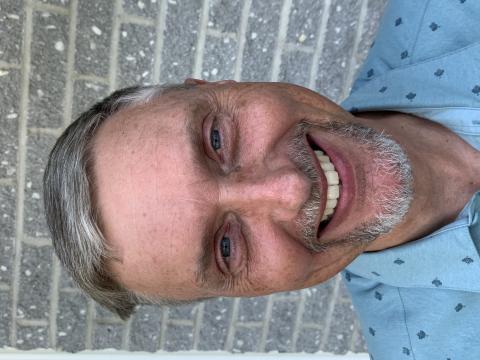Church Renewal, Global Mission
Meet Winston Visser: Newly-Appointed Catalyzer, Outreach Ministry Developer for Classis Eastern Canada


All the while my mind soared far and wide through whatever I read and studied: Piet Prins to Lucy Maude Montgomery, The Banner to Maclean’s, Louis L’Amour to Dietrich Bonhoeffer. As Yoda said of Luke Skywalker, “This one… all his life has he looked away… to the future, to the horizon. Never his mind on where he was.” Perhaps, but as I matured, I tried to bridge the two: the imagination with the practical.
Jerome W. Berryman writes in Godly Play, “The ambiguity of the imagination is at the root of our being. To be alive we must create in biological, psychological, social, and spiritual ways. This is our destiny since Eden (page 135). It does not need a special quality, leaps of genius, and unique forms of thinking to work (Page 133).”
As an imaginative realist, reading and ongoing learning are the wings on which my mind soars the blue skies of ideas, and possibilities, seeking ways to land some of them within reality. My reality includes three generations under one roof: my mom, spouse, myself, and two of our four adult children. Flights of imagination inspire me practically in how I assist my wife in her cut flower business, relate to our children, care for our cat, hike our trails, build a meandering rock wall, drive a transport, or eat meals together, without books or mobiles propped on the table.
This same imagination causes me to wonder, “Why do we do church in the ways that we do?” The possibilities are as many as the contexts in which we find ourselves. Each believer and church can uniquely express the good news of Jesus Christ within their circumstances and communities, as no other person or church can. God is creative as are we, God’s children. So, I desire to partner with believers and congregations in living faith creatively and imaginatively within our unique contexts. That is the horizon I look to, while in the present taking practical steps to reach it personally, vocationally, and communally.
The following poem expresses my appreciation of our past, and how we can be as church:
Inukshuks
Across the land from whatever was at hand:
Mud, straw; stone, stick; board, brick.
Placed on chosen plots:
Central, costly, lofty.
For practices, sincere or not:
Ritually, spiritually.
Peculiar places, stick out rurally,
In cities, overshadowed easily.
Stood for seasons, stand, still,
Witness of the profound to profane.
Home to both myths, and, mystery.
To some, tombstones, marking,
“Here lies Christianity”
“Torn by lions, logic and science”
For others, Inukshuks, pointing,
“It’s not here,
but there,
among the lions!
—Winston Visser, November 2017
The poem was inspired by the twin Norman towers, flat topped spires, of St. Joseph’s Catholic Parish on Little Bras d’Or Lake, seen as I came over the rise in my transport truck one early morning on the way to North Sydney, NS to catch the ferry to NFLD.
Connect to The Network and add your own question, blog, resource, or job.
Add Your Post
Comments
Never mind your albeit fine poem...
Post picture of truck!
John
Let's Discuss
We love your comments! Thank you for helping us uphold the Community Guidelines to make this an encouraging and respectful community for everyone.